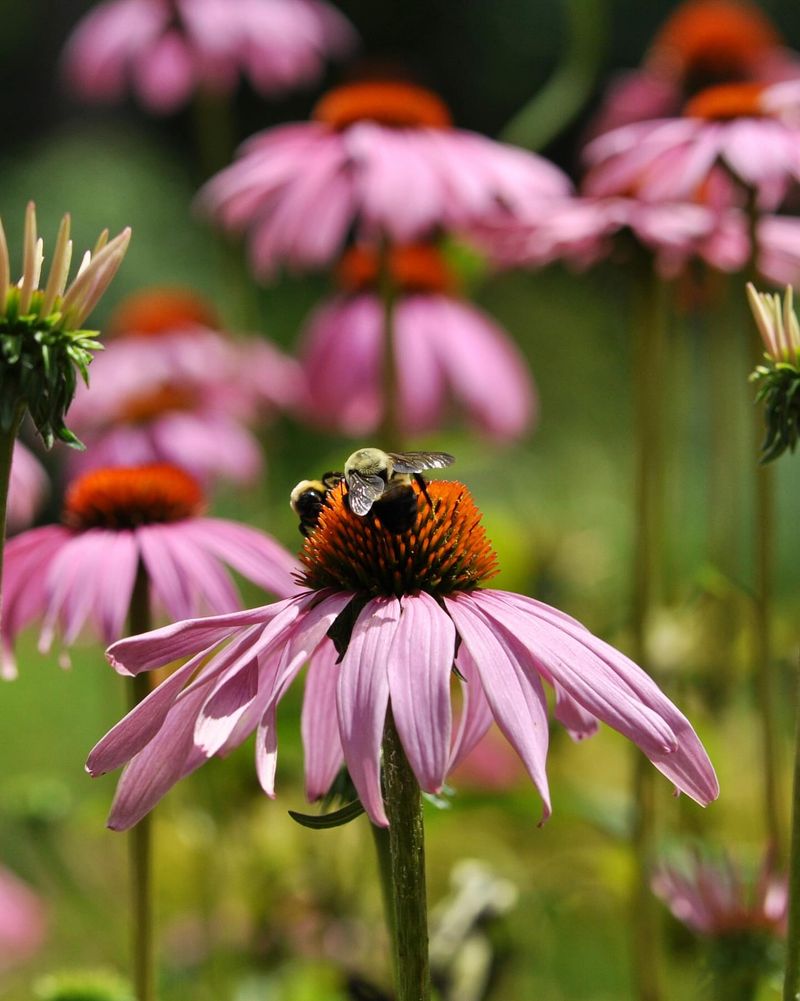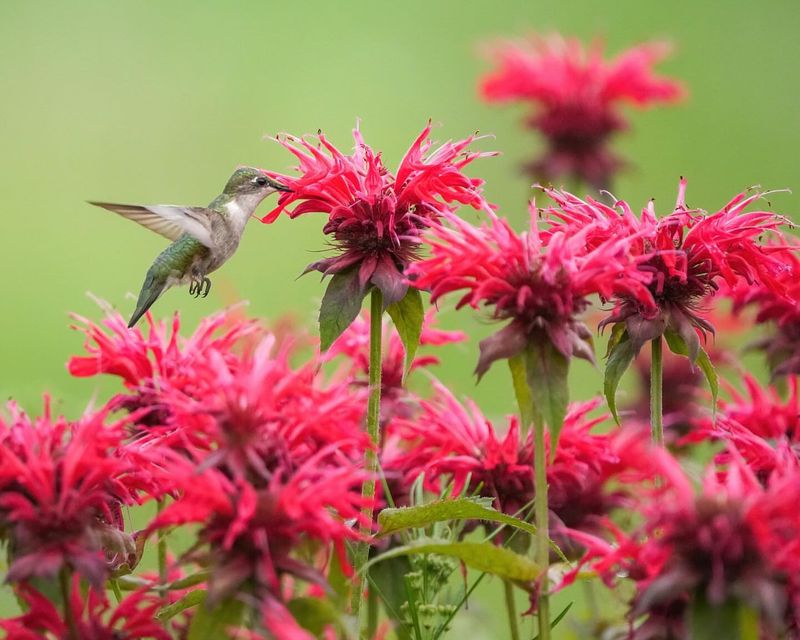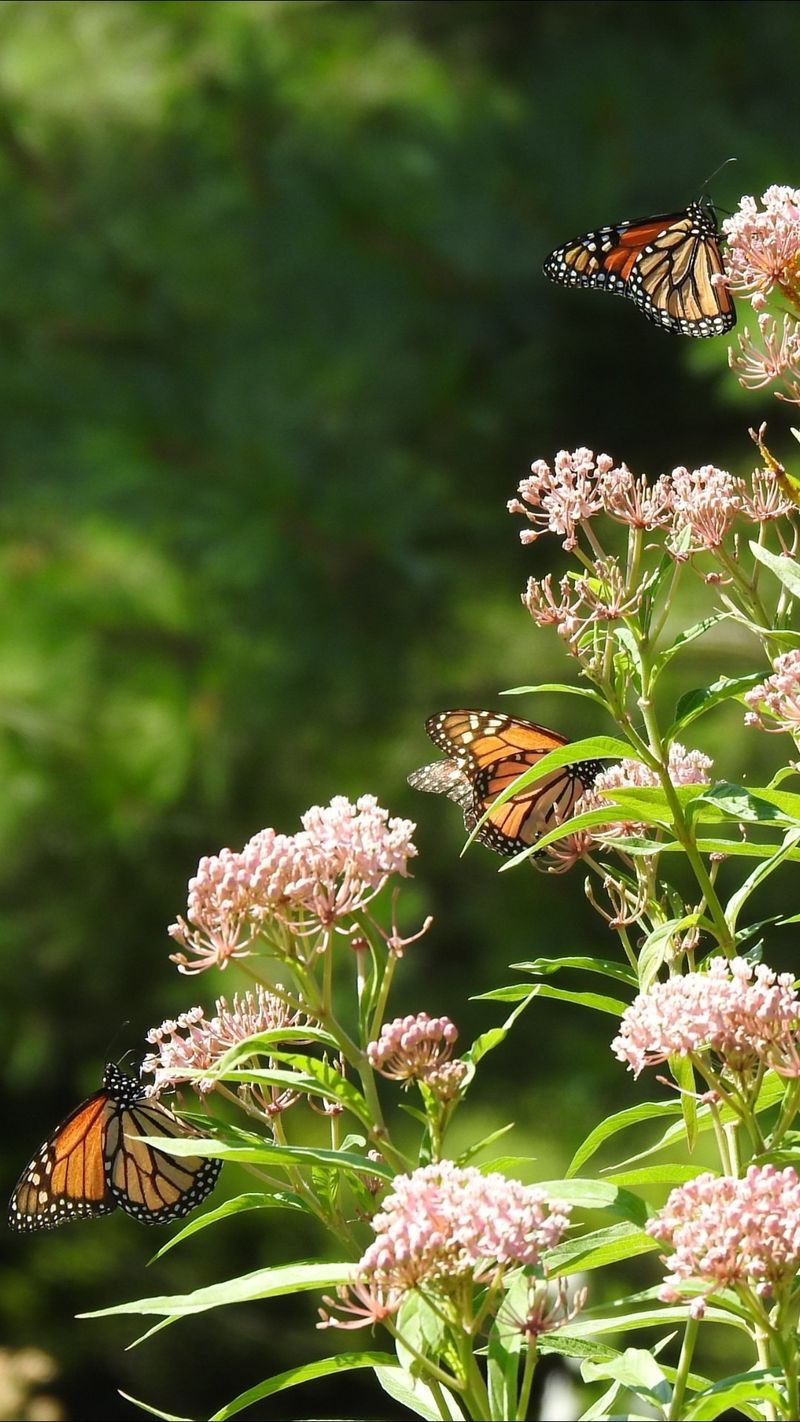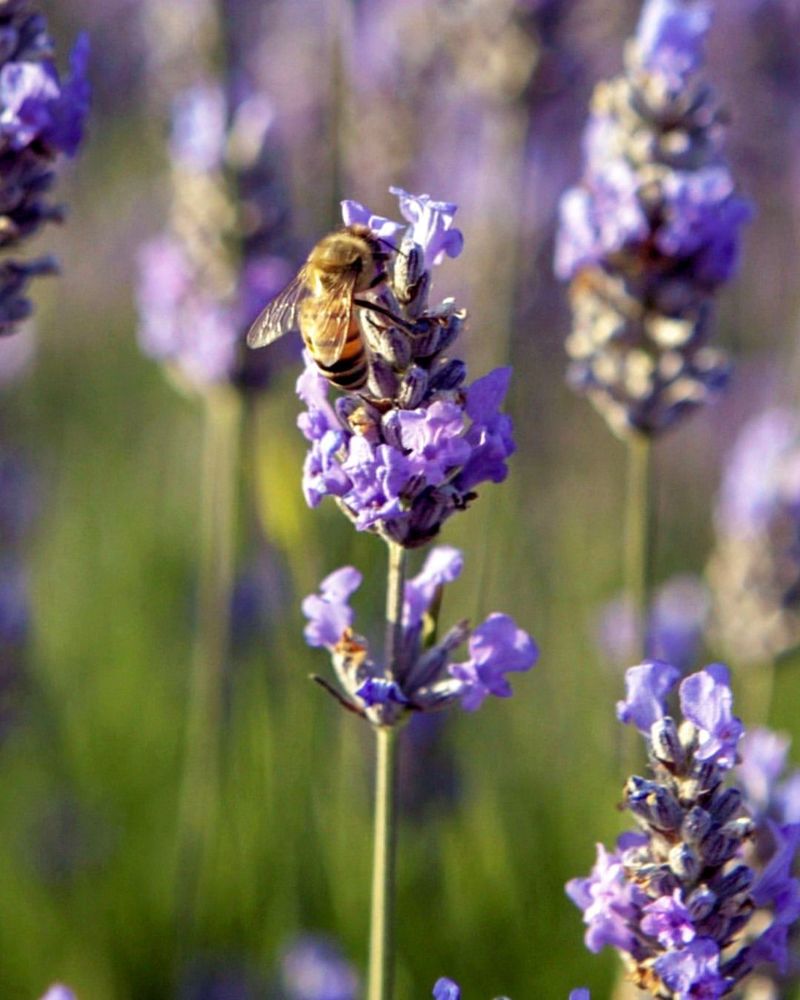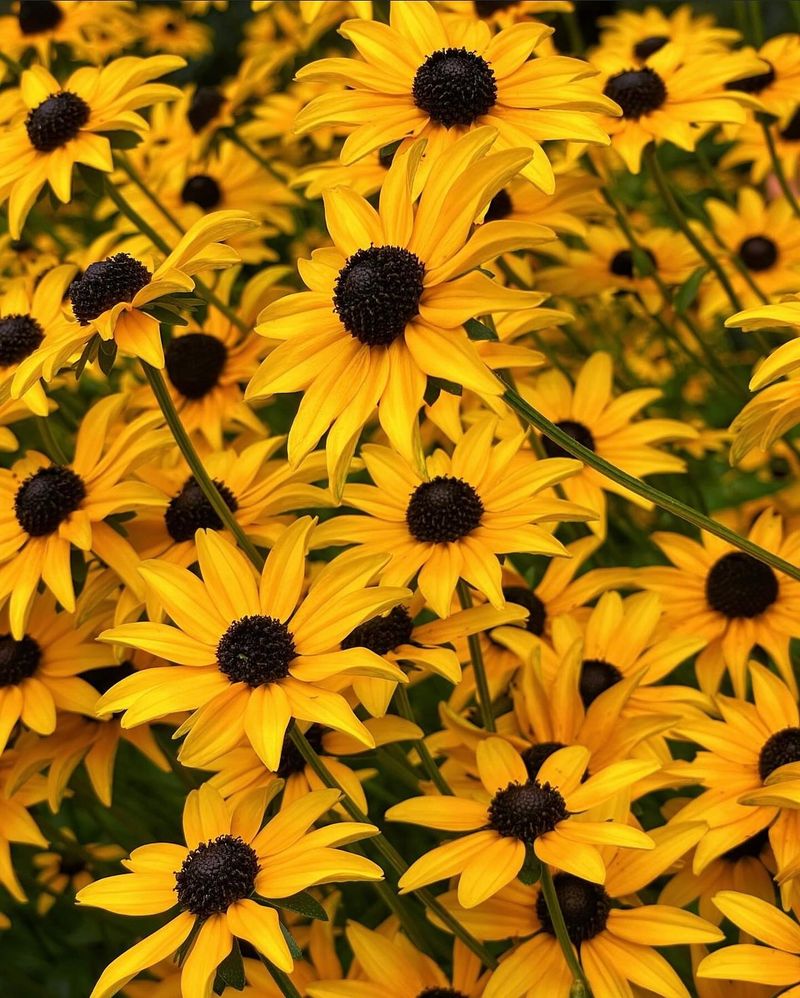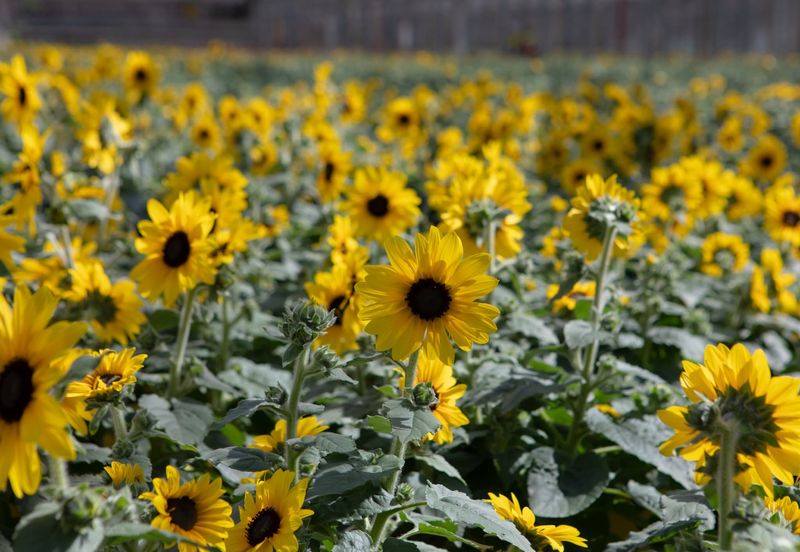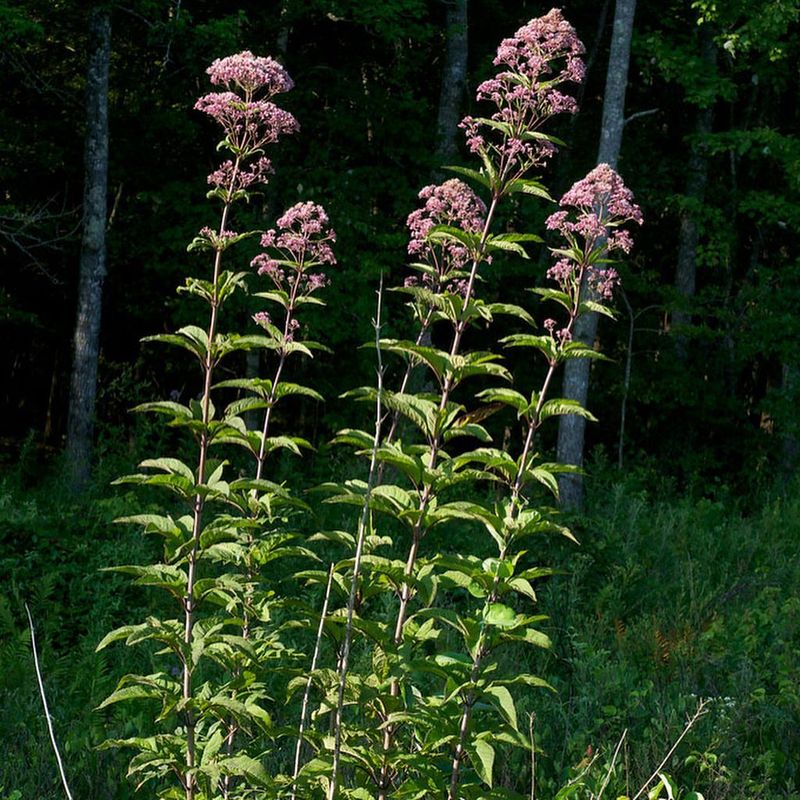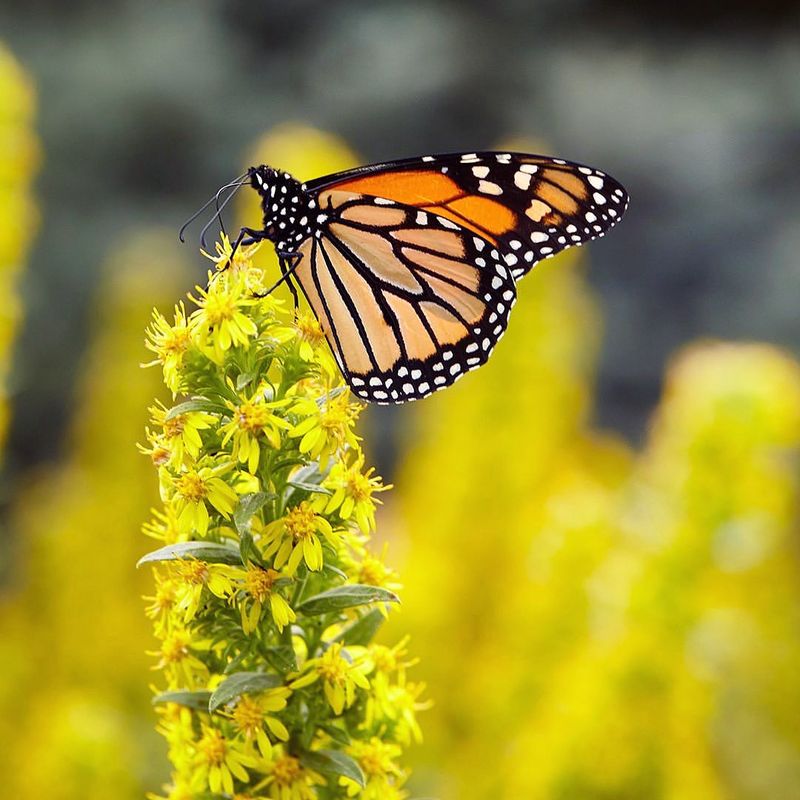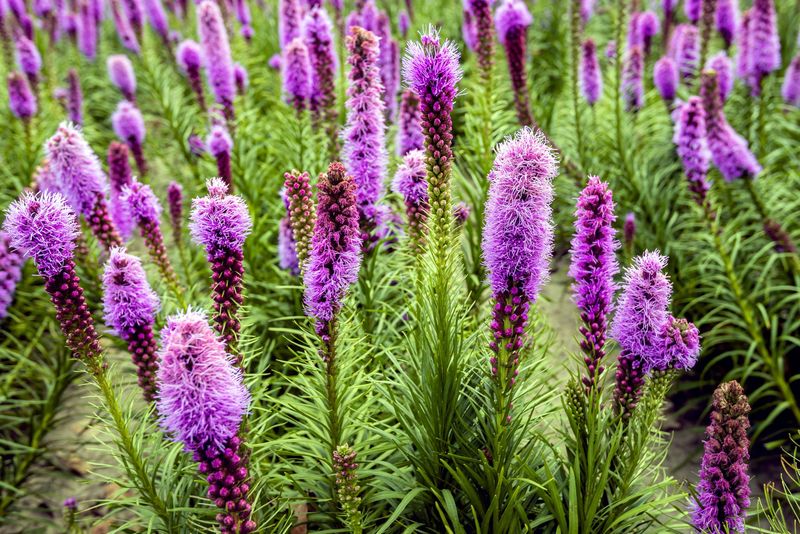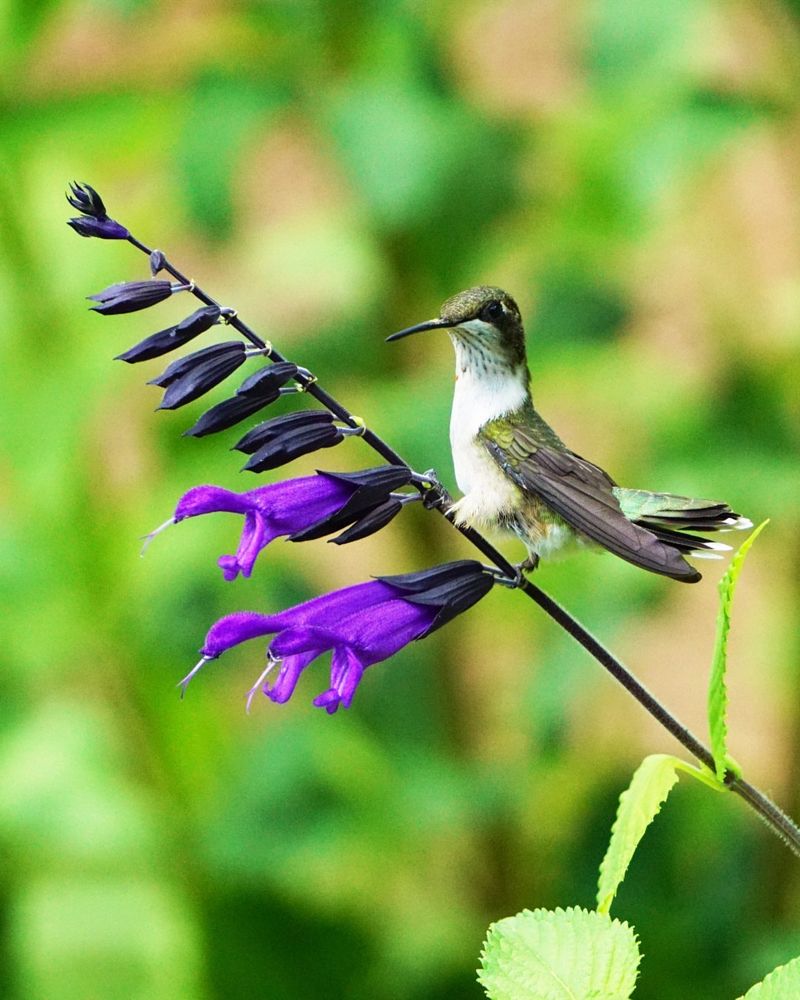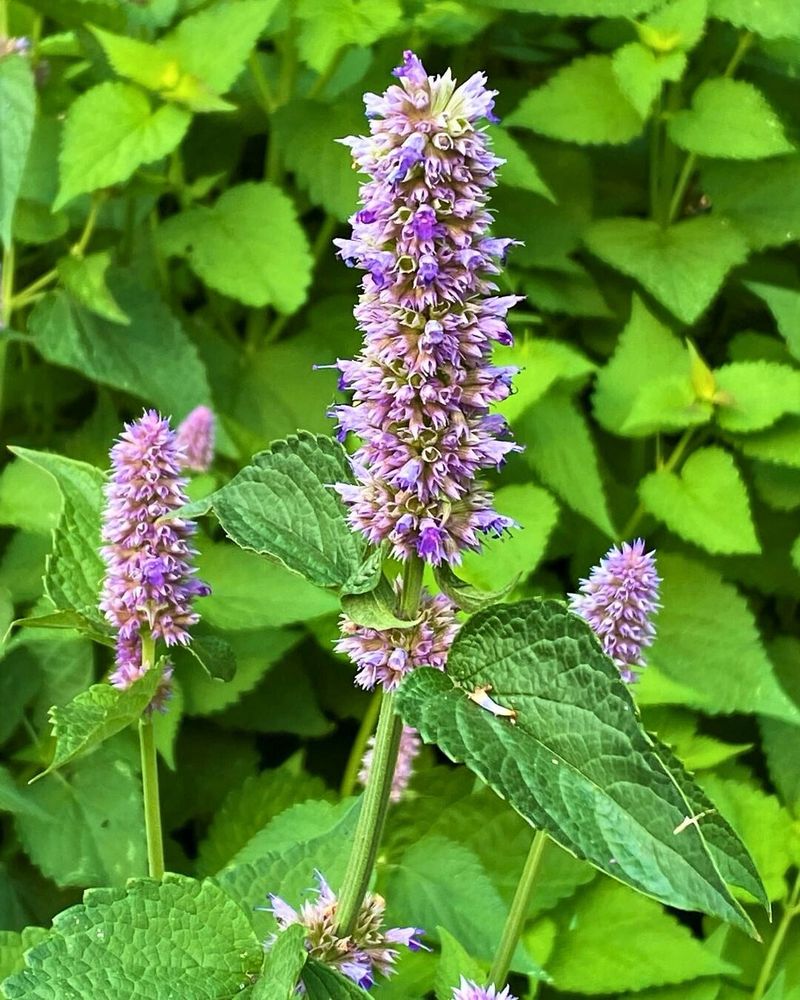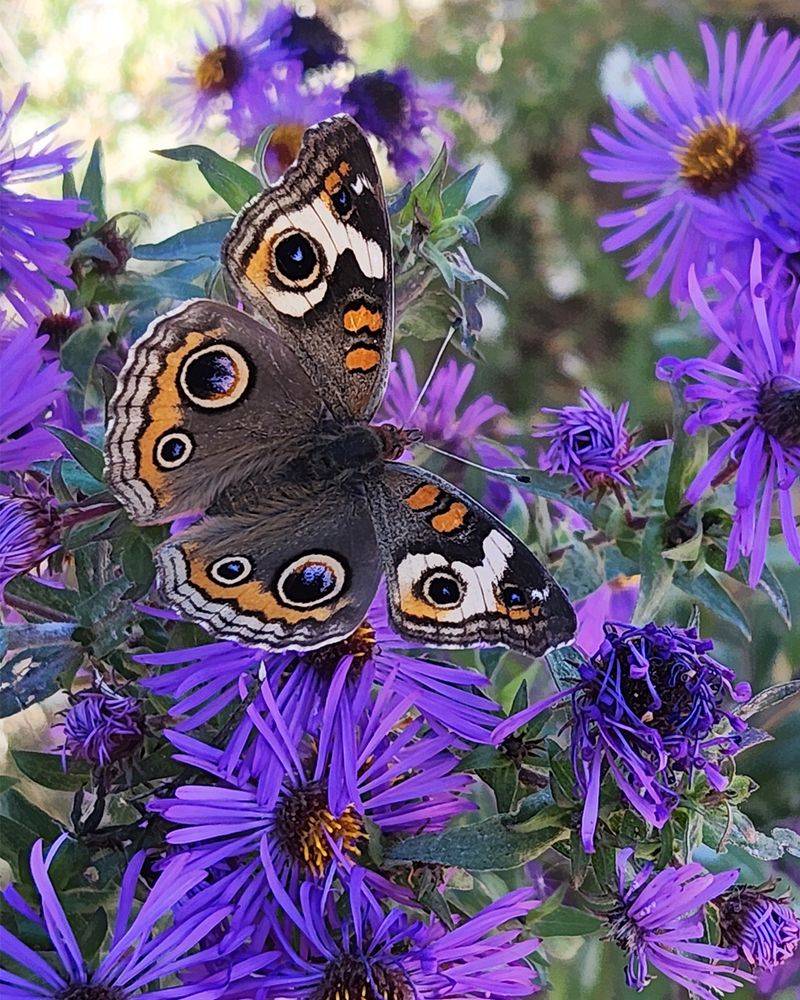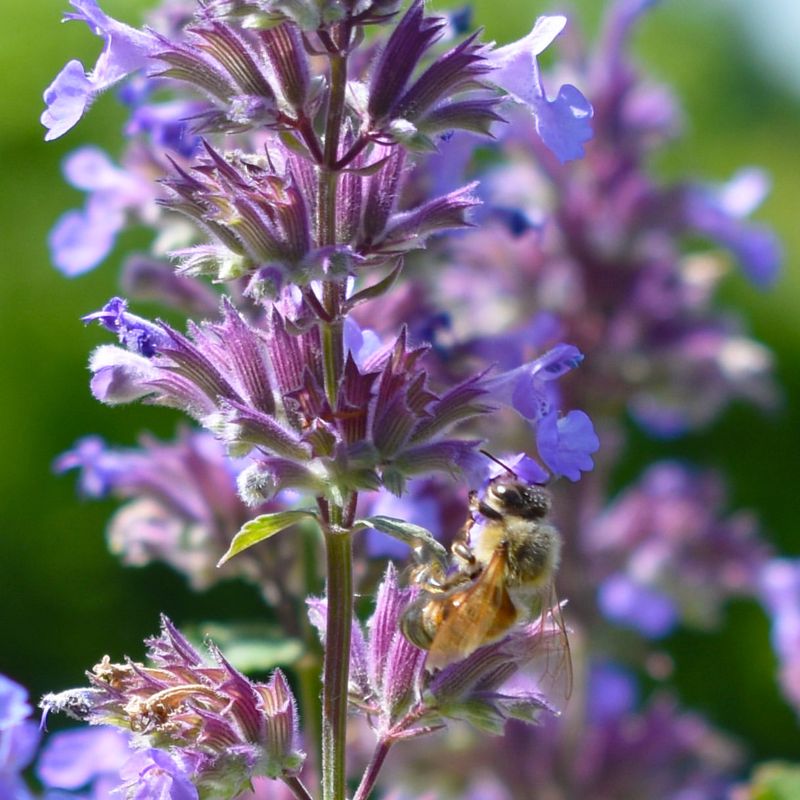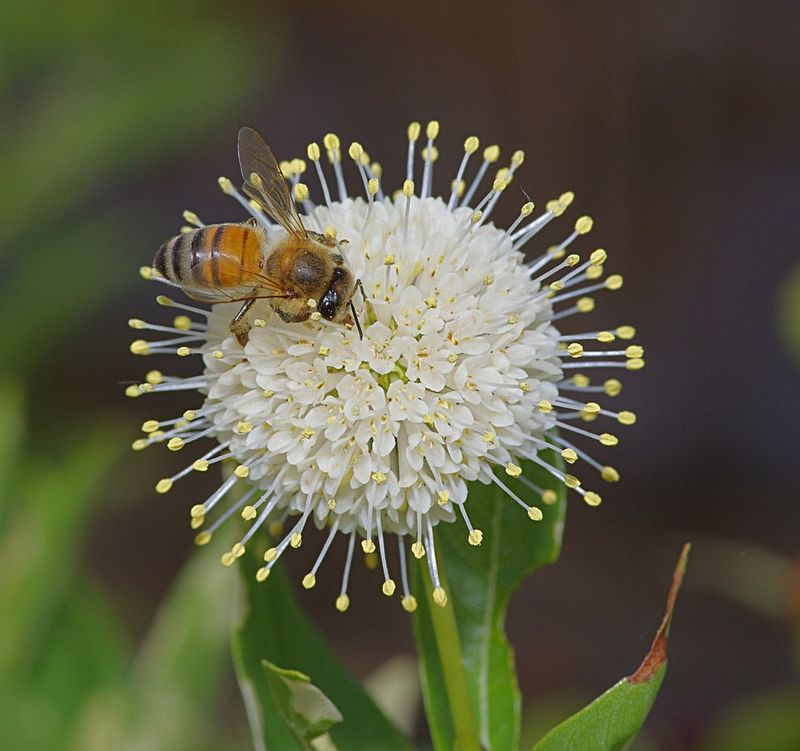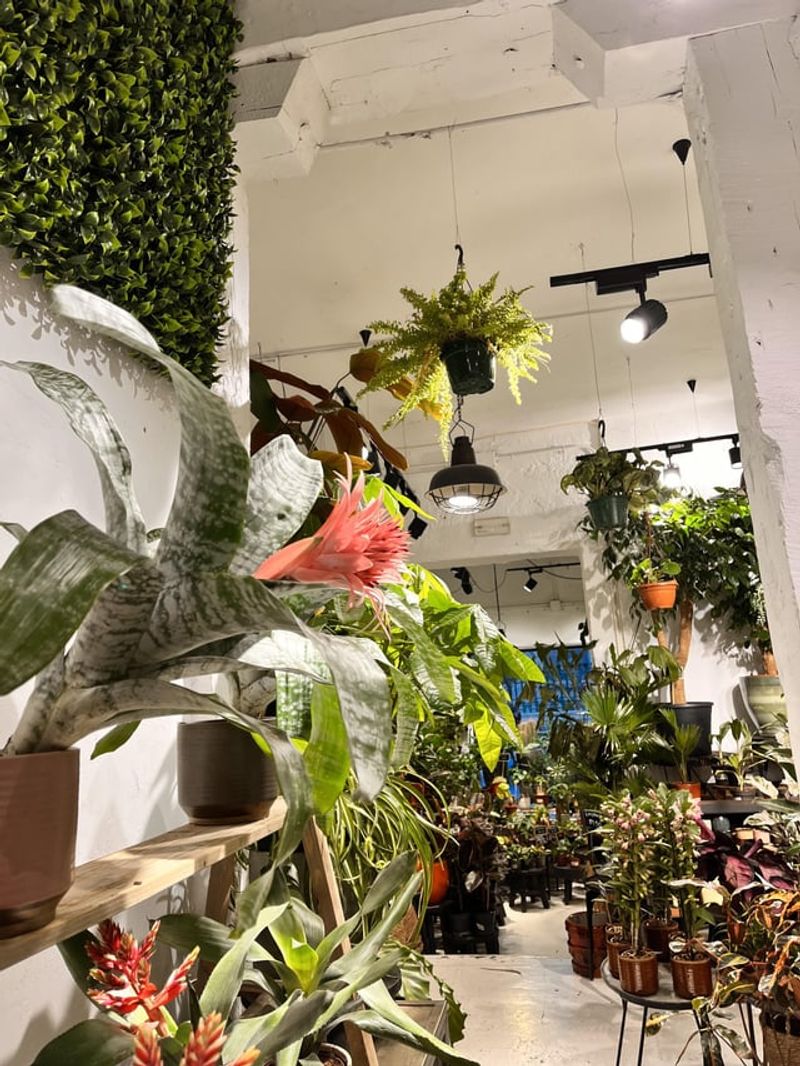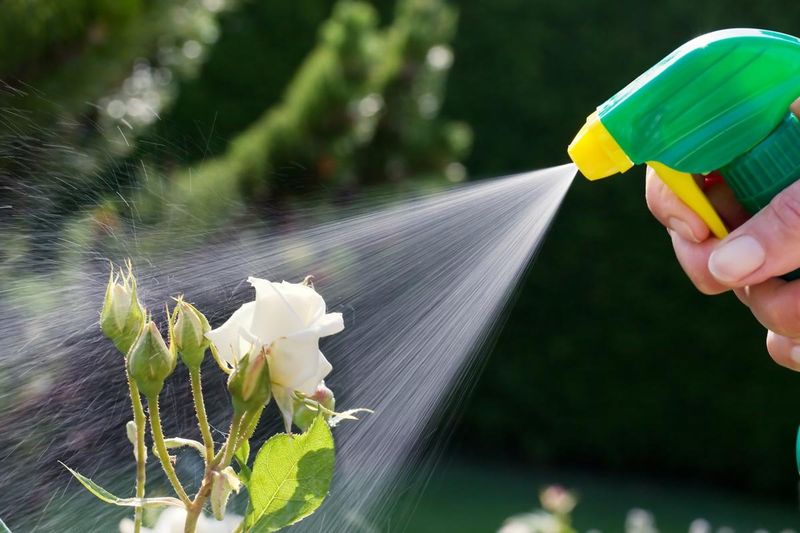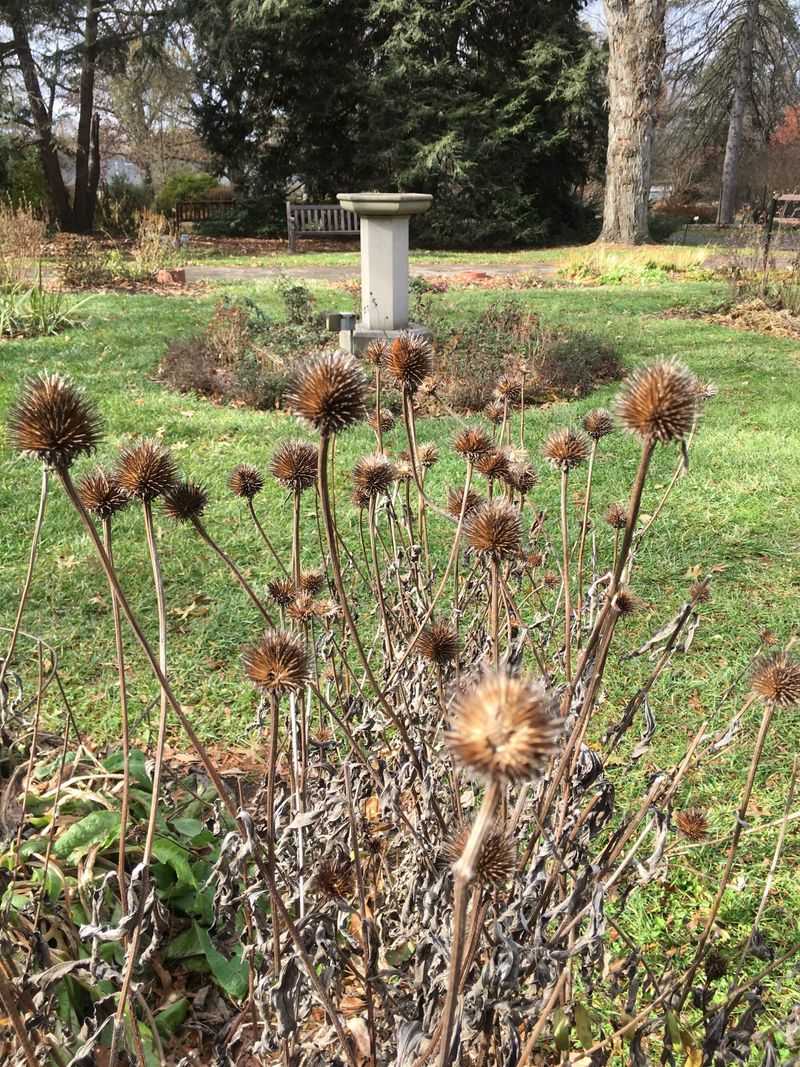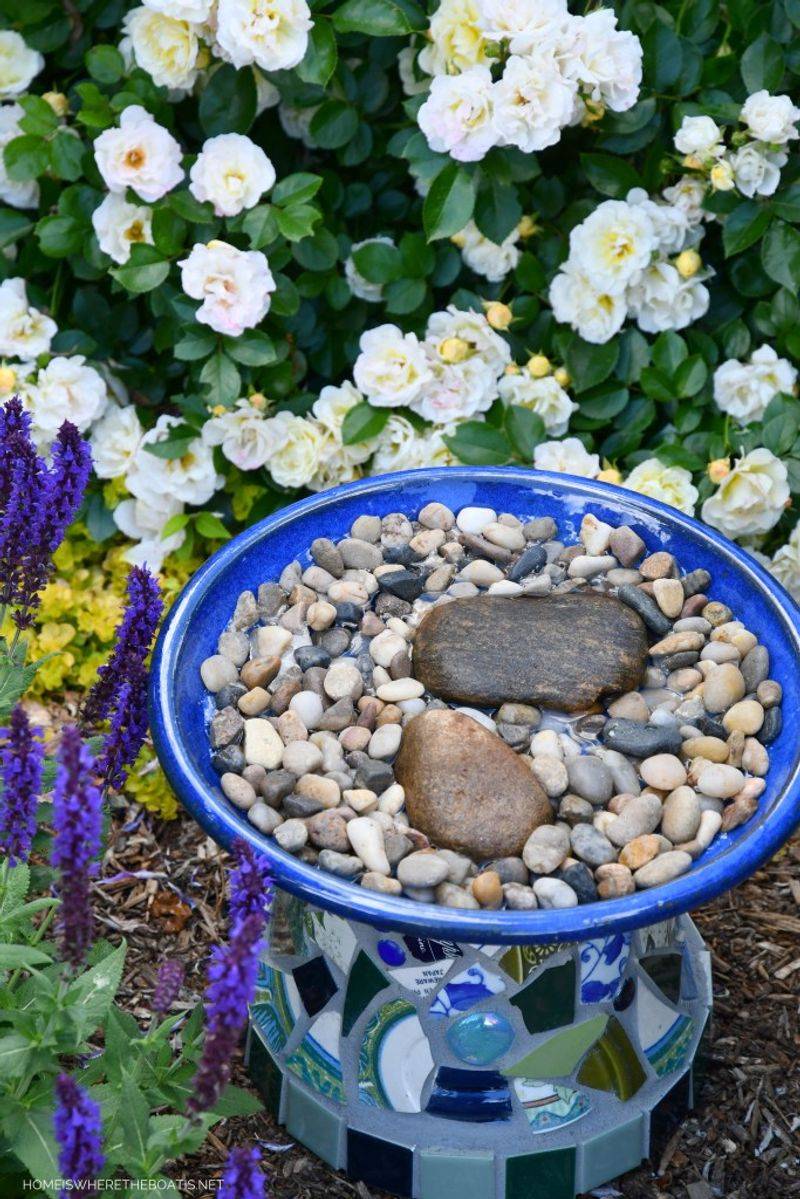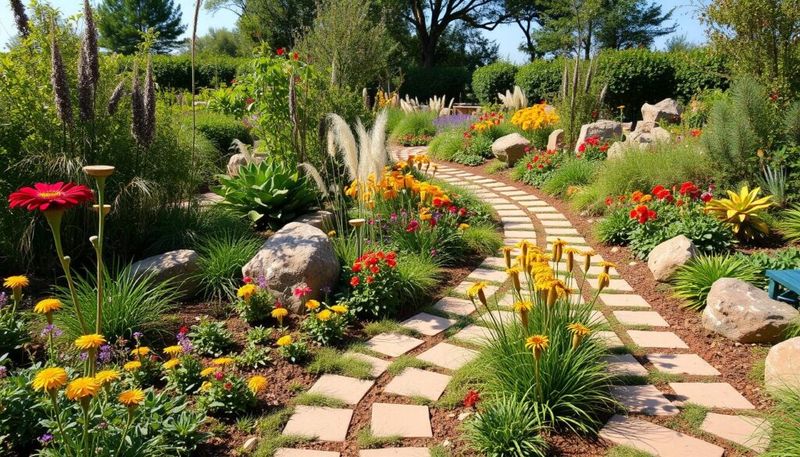There’s something incredibly rewarding about stepping into your garden and seeing it alive with fluttering butterflies and buzzing bees. It’s not just pretty—it feels like you’re giving something back to nature, right in your own backyard.
With pollinators struggling in so many places, even a small patch of flowers can make a big difference. I’ve learned that choosing the right blooms—and skipping a few common mistakes—can turn your garden into a true haven for these vital creatures.
From sunny black-eyed Susans to delicate bee balm, the right mix of flowers will keep your garden colorful and buzzing all season. Let’s take a look at what to plant and what to avoid when building your pollinator paradise.
1. Purple Coneflower (Echinacea)
Native to North America, these drought-resistant beauties bloom throughout summer and into fall. Their prominent central cones provide landing pads for bees and butterflies while offering nutritious seeds that goldfinches love.
I’ve noticed bumblebees practically fighting over my coneflowers on summer afternoons! They’re virtually maintenance-free once established, making them perfect for busy gardeners.
For best results, plant in full sun with well-draining soil. They’ll multiply naturally over time, giving you free plants to expand your pollinator paradise.
2. Bee Balm (Monarda)
Sporting shaggy, crown-like flowers in red, pink, or purple, this native perennial acts like a magnet for hummingbirds and bees. The fragrant foliage gives off a minty scent when brushed against, adding sensory appeal to your garden.
Plant bee balm in spots with good air circulation to prevent powdery mildew. My patch started as a single plant from a friend’s garden and now fills a 3-foot section with minimal care.
Deadheading spent blooms encourages additional flowering through summer. Even beginners find success with this forgiving, spreading perennial.
3. Milkweed (Asclepias)
No butterfly garden is complete without milkweed—the only plant monarch caterpillars can eat. Beyond saving monarchs, the nectar-rich flower clusters attract countless other pollinators throughout summer.
Choose native milkweed varieties for your region. Common milkweed spreads through underground runners, while butterfly weed forms well-behaved clumps perfect for smaller spaces.
Seed pods provide winter interest and can be harvested before they burst. I save and share seeds with neighbors each fall, slowly creating a neighborhood monarch corridor.
4. Lavender (Lavandula)
Beyond its famous fragrance, lavender delivers nectar to bees from early summer through fall, depending on the variety. The silver-green foliage looks stunning even when not in bloom, adding year-round structure.
Growing lavender successfully requires excellent drainage—my first plants failed until I mixed sand into my clay soil. Now they thrive in the driest part of my garden with minimal watering.
For cold climates, choose hardy varieties like ‘Munstead’ or ‘Hidcote.’ Prune after flowering but never cut into woody stems, and your plants will reward you with years of pollinator-attracting blooms.
5. Black-Eyed Susan (Rudbeckia)
Golden daisy-like flowers with distinctive dark centers make these native beauties standout performers in any pollinator garden. Their long blooming season stretches from midsummer into fall when many other flowers have faded.
Tough and adaptable, black-eyed Susans tolerate poor soil and drought once established. I’ve watched goldfinches balance on the seed heads in fall, demonstrating how one plant can serve wildlife year-round.
Space plants about 18 inches apart—they’ll fill in quickly. Some varieties self-seed generously, creating a naturalized meadow effect that requires almost no maintenance.
6. Sunflowers (Helianthus)
Annual sunflowers transform from seedling to towering pollinator buffet in just months. Their enormous flower heads provide landing pads for bees, while later serving up nutritious seeds for birds.
Look beyond the giant single-stemmed varieties. Branching types like ‘Autumn Beauty’ or ‘Italian White’ produce dozens of blooms per plant, maximizing nectar production for your garden visitors.
Sowing seeds directly in the garden after frost danger passes gives best results. My favorite trick: plant them along fences for natural support and to create living privacy screens filled with buzzing activity.
7. Joe-Pye Weed (Eutrochium)
Despite its unfortunate name, this native perennial deserves prime garden real estate. Reaching impressive heights of 5-7 feet, its mauve flower clusters become butterfly highways in late summer when many other plants have finished blooming.
Consider the more compact varieties like ‘Little Joe’ for smaller gardens. The vanilla-scented flowers emit a subtle fragrance that carries through the garden on warm afternoons.
Plant in consistently moist soil for best results. During a particularly dry spell, I noticed my Joe-Pye weed plants drooping before anything else—they’re excellent indicators when the garden needs water.
8. Zinnia (Zinnia elegans)
Few annual flowers deliver more pollinator value for less effort than zinnias. From seed to first bloom takes just weeks, and they’ll continue flowering until frost with minimal care.
Single-flowered varieties allow easier access to nectar and pollen than doubled forms. ‘Profusion’ series resists disease while ‘Cut and Come Again’ responds to harvesting with even more blooms.
Last summer, I scattered leftover zinnia seeds in my vegetable garden paths. The resulting flowers not only brought in beneficial insects that reduced pest problems but provided free bouquets all season long.
9. Goldenrod (Solidago)
Unfairly blamed for hay fever (ragweed is the actual culprit), goldenrod deserves rehabilitation in our gardens. Its late-season golden blooms provide crucial nectar for migrating monarchs and countless other pollinators preparing for winter.
Garden-friendly varieties like ‘Fireworks’ or ‘Little Lemon’ stay compact and well-behaved. The arching sprays of tiny flowers create spectacular autumn displays alongside ornamental grasses.
Contrary to its roadside behavior, garden goldenrod varieties rarely spread aggressively. My ‘Golden Fleece’ plants have maintained perfect clumps for years, becoming anchor points in my fall pollinator garden.
10. Blazing Star (Liatris)
Standing tall with purple bottle-brush flowers that bloom from top to bottom, blazing star creates vertical drama while serving butterflies for weeks. The unusual blooming pattern (most flowers bloom bottom-up) extends the nectar season.
Plant corms in fall or spring, spacing them about 12 inches apart. Within two years, they’ll form impressive clumps that require zero maintenance beyond occasional dividing.
Drought tolerance makes blazing star perfect for hot, sunny spots. After establishing a patch near my mailbox, I’ve enjoyed watching butterflies while collecting mail—turning a chore into a moment of garden appreciation.
11. Salvia (Sage)
From annual varieties to hardy perennials, salvias offer something for every garden. Their tubular flowers in blues, purples, and reds attract specialized pollinators like hummingbirds alongside bees and butterflies.
May Night perennial salvia blooms early and reblooms after cutting back. Annual varieties like ‘Black and Blue’ grow quickly from seed and flower until frost with minimal care.
Most salvias thrive in average to poor soil and moderate drought. I’ve found them particularly valuable in hot, sunny spots where other flowers struggle—they keep pumping out nectar even during summer’s toughest weeks.
12. Anise Hyssop (Agastache)
Combining ornamental beauty with culinary and medicinal value, anise hyssop earns its garden space many times over. The licorice-scented foliage and purple flower spikes attract bees from the moment blooms appear in early summer.
Heat and drought tolerance make this North American native remarkably low-maintenance. Even during last year’s record heat wave, my plants continued flowering when neighbors’ gardens looked parched.
Harvest leaves for tea or baking while leaving plenty of flowers for pollinators. Seeds self-sow gently, creating welcome volunteers that can be relocated or shared with friends.
13. Asters (Symphyotrichum)
Fall-blooming asters provide crucial late-season nectar when most garden flowers have finished. Their daisy-like blooms in purples, pinks, and whites become gathering spots for butterflies preparing for migration.
Native varieties like New England aster and aromatic aster outperform European types in supporting local pollinators. Pinching stems back by half in early summer creates bushier plants with more flowers.
My garden corner dedicated to asters becomes the garden’s most active spot in September and October. Dozens of butterfly species I rarely see earlier in the season suddenly appear, making autumn a second spring for pollinator watching.
14. Catmint (Nepeta)
Starting the pollinator season early, catmint’s lavender-blue flower spikes emerge in late spring when many bees are just establishing colonies. The gray-green aromatic foliage naturally repels deer and rabbits while attracting beneficial insects.
Cutting back after the first flowering triggers a second, often more impressive bloom period. Modern varieties like ‘Walker’s Low’ and ‘Purrsian Blue’ maintain tidy habits without flopping.
Few perennials match catmint’s combination of drought tolerance, long bloom time, and pollinator appeal. My front walkway planting has survived complete neglect during summer vacations while continuing to support dozens of native bee species.
15. Buttonbush (Cephalanthus)
For gardeners with room for shrubs, buttonbush delivers extraordinary pollinator value. Its distinctive spherical white flowers resemble pincushions and attract an impressive diversity of specialist bees and butterflies.
Naturally found in wet areas, buttonbush nevertheless adapts to average garden conditions once established. The unusual seedheads provide winter interest and food for birds.
Consider the compact ‘Sugar Shack’ variety for smaller gardens. My specimen anchors a rain garden corner, thriving in conditions that would challenge most flowering plants while hosting dozens of pollinator species throughout summer.
16. Using Too Many Exotic Plants
Filling gardens with non-native plants might create visual appeal but often leaves pollinators hungry. Many exotic flowers have been bred for looks rather than nectar or pollen production, creating what ecologists call “pollinator food deserts.”
Native insects have evolved alongside native plants for thousands of years, developing specialized relationships. I learned this lesson when replacing my imported ornamentals with native alternatives—butterfly visits tripled in just one season!
Aim for at least 70% native plants in your pollinator garden. You’ll enjoy more wildlife activity while spending less on fertilizer, water, and pest control.
17. Spraying Pesticides
Even organic or “natural” pesticides can harm beneficial insects. Products containing neem oil, pyrethrin, or spinosad—while effective against pests—don’t discriminate between harmful and helpful bugs.
Instead of reaching for spray bottles, focus on building garden resilience. Healthy soil, proper plant spacing, and diverse plantings naturally reduce pest problems by attracting beneficial predators.
After abandoning all pesticides five years ago, my garden experienced an adjustment period but eventually reached a beautiful balance. Now ladybugs, lacewings, and predatory wasps handle pest control while I enjoy more pollinators than ever before.
18. Removing All Fall Debris
That fall cleanup checklist might be harming rather than helping your garden. Many native bees and butterflies overwinter in hollow stems, leaf litter, or loose soil—all typically removed during aggressive fall tidying.
Leave perennial stems standing until spring, especially those with hollow or pithy centers like coneflowers and bee balm. Create small brush piles in quiet corners for overwintering beneficial insects.
My compromise approach: clean up only diseased material in fall, leaving everything else until spring temperatures consistently reach 50°F. This simple change has increased year-over-year pollinator populations in my garden dramatically.
19. Forgetting Water Sources
Pollinators need water just as much as nectar, especially during hot summer days. Without shallow water sources, bees and butterflies may avoid otherwise perfect gardens.
Create pollinator drinking stations by filling shallow dishes with pebbles and water. The stones provide safe landing spots while preventing drowning. Even birdbaths work if equipped with partially submerged rocks.
My simple solution uses recycled plant saucers placed at ground level throughout the garden. Maintaining these water sources during summer drought periods has noticeably increased butterfly lingering time—they drink, rest, then resume feeding rather than flying elsewhere.
20. Creating Too Tidy Spaces
Perfectly manicured gardens might win neighborhood approval but offer little for wildlife. Bare mulch, excessive pruning, and isolated plants create pollinator-unfriendly environments despite our best intentions.
Allow some areas to grow slightly wild, with plants touching and mingling. These connection points create insect highways and protective cover from predators and harsh weather.
The most active section of my pollinator garden is what I call my “planned chaos” bed—densely planted with varying heights and no visible mulch. Visitors sometimes question its untidy appearance until they notice it contains more butterfly and bee activity than anywhere else.


